Buried Treasure
They Were 11
by Justin Sevakis,
 Shoujo and sci-fi are two flavors that seldom go together. After all, sparkly eyes, flowing hair and romantic emotions are nearly the thematic opposite of science fiction, and I imagine that few female teenagers drift off into fantasies of cyborgs with laser turrets coming out of their navels, exploding genetically mutated rhesus monkeys on motorcycles and three-chinned alien invaders with a taste for the blood of human infants. (I humbly suggest that any such female would eventually grow up to be indescribably awesome.*)
Shoujo and sci-fi are two flavors that seldom go together. After all, sparkly eyes, flowing hair and romantic emotions are nearly the thematic opposite of science fiction, and I imagine that few female teenagers drift off into fantasies of cyborgs with laser turrets coming out of their navels, exploding genetically mutated rhesus monkeys on motorcycles and three-chinned alien invaders with a taste for the blood of human infants. (I humbly suggest that any such female would eventually grow up to be indescribably awesome.*)
(*but I am probably wrong and you are scary so please don't e-mail me.)
However, on the rare occasion that the two meet, one can usually rest assured that the work will be something original. Such is the case with They Were 11, a movie adapted from a popular shoujo manga by Moto Hagio in 1986. (Mike Toole's review pointed out that Kenji Miyazawa may have inspired the concept, which makes me happy.)
The setup is the familiar concept of examination hell: a ton of bright, well-prepared teenagers sweating profusely over the tests that are going to determine whether they can get into the high school of their choice. (Given the amount of stress they put themselves under, they clearly think it will determine the entire course of their lives.) It's an engaging, character-driven piece that works paranoia and the high-strung emotions of young under stress into a suspenseful study in mob mentality.
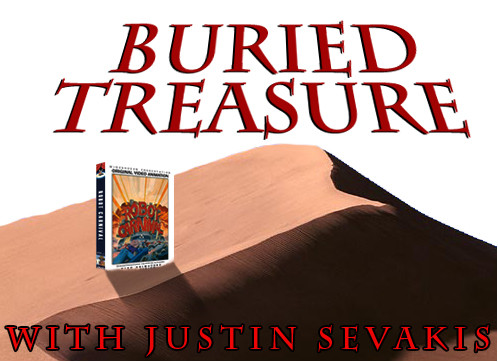
They Were 11
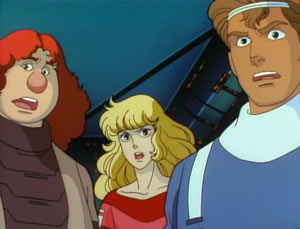 We first meet Thadatos "Tada" Lane as he's finishing up the written portion of his exam (well, ambiguously typing numbers into a large computer, and as this is classic sci-fi, these computers beep a lot). With a sense of accomplishment, he's lead over to the locker room area to get suited up for the next segment of the exam: he and 9 other candidates are to pilot a space craft together for 53 days. If they don't have to push the emergency rescue button, they all get in. If they have to get rescued (or somebody dies), they all fail and have to wait another three years for another chance.
We first meet Thadatos "Tada" Lane as he's finishing up the written portion of his exam (well, ambiguously typing numbers into a large computer, and as this is classic sci-fi, these computers beep a lot). With a sense of accomplishment, he's lead over to the locker room area to get suited up for the next segment of the exam: he and 9 other candidates are to pilot a space craft together for 53 days. If they don't have to push the emergency rescue button, they all get in. If they have to get rescued (or somebody dies), they all fail and have to wait another three years for another chance.
Now, this is not just any school. It's Cosmo Academy, the most elite place of study in the universe, and attending virtually guarantees their futures. As they all pile into the space ship, each of them appears nervous in their own ways. But then, something is wrong. They count how many people are assigned to their ship. There are eleven!
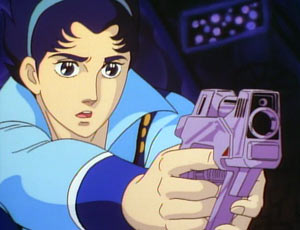 So, who's the extra person? Is it simply a mistake by the academy (no way!) or an intentional saboteur? Most eyes are on Tada. He seems to have an uncanny knowledge of the ship (which is a complete wreck, by the way) and a weak form of ESP that can tell when people are lying. But he doesn't sense that anybody actually is lying, and naturally, he is suspect as well. with no evidence, the team starts going about their duties, keeping an eye on their own backs all the while.
So, who's the extra person? Is it simply a mistake by the academy (no way!) or an intentional saboteur? Most eyes are on Tada. He seems to have an uncanny knowledge of the ship (which is a complete wreck, by the way) and a weak form of ESP that can tell when people are lying. But he doesn't sense that anybody actually is lying, and naturally, he is suspect as well. with no evidence, the team starts going about their duties, keeping an eye on their own backs all the while.
Bad things start happening. The ship is hard to repair, and is slowly moving towards the sun, which means that everything is getting warmer and more dangerous. Worse, a mysterious plant is growing in the ship, which appears to be making people ill. As pressure mounts and the situation looks increasingly dire, the young team reaches its breaking point. Who is the extra member? Whose fault is it that so many bad things are happening? Will the inexperienced team start to kill and eat each other?
 What's most interesting about the film is the cast, and the way that each individual plays against the other. "King", nicknamed as such because he actually is a king, takes command and is a born leader, but at the same time has trouble dealing with things that don't go his way. Tada, having lived a life of middle-class hard work, toils quietly in an effort to keep the peace. His polar opposite is Frol, a loud brash blonde with a short fuse and a questionable gender. Other interesting personalities include the chilled-out singer-songwriter Amazon, and Doricas, who is rich in both inheritance and wit. Under normal circumstances, they seem like they'd be cool to hang out with. Under pressure, however, they aren't exactly at their best.
What's most interesting about the film is the cast, and the way that each individual plays against the other. "King", nicknamed as such because he actually is a king, takes command and is a born leader, but at the same time has trouble dealing with things that don't go his way. Tada, having lived a life of middle-class hard work, toils quietly in an effort to keep the peace. His polar opposite is Frol, a loud brash blonde with a short fuse and a questionable gender. Other interesting personalities include the chilled-out singer-songwriter Amazon, and Doricas, who is rich in both inheritance and wit. Under normal circumstances, they seem like they'd be cool to hang out with. Under pressure, however, they aren't exactly at their best.
The design aspects of the film admittedly do fall victim to 80s sci-fi genre trappings, which include silly looking jumpsuits, sillier looking alien races (a la Star Trek) and downright goofy names that surely sound better to someone who doesn't know English. Frol's full name, for example, is -- get this -- "Frolbericheri". I'm sorry, but that sounds like some horrible satanic cereal with marshmallows. More amusingly is that the one character of African descent, Chaco Kacka, is obviously named for Chaka Kahn.
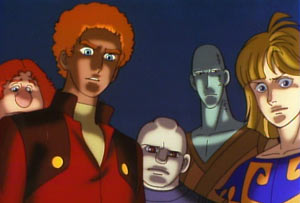 It's a testament to the characters and the writing that, despite these issues, most of the them are sympathetic. Each of them get at least a little time to develop a personality, which comes out through the way they work together and goof off together. Despite how both their culture and their sci-fi stereotype is perceived, they tend to develop into their own unique people. Tada is actually the most milquetoast of the bunch.
It's a testament to the characters and the writing that, despite these issues, most of the them are sympathetic. Each of them get at least a little time to develop a personality, which comes out through the way they work together and goof off together. Despite how both their culture and their sci-fi stereotype is perceived, they tend to develop into their own unique people. Tada is actually the most milquetoast of the bunch.
They Were 11 was co-directed by two men who, unfortunately, have questionable track records at best. Satoshi Dezaki (Osamu's older brother) brought us mostly second-rate 80s sports anime and the wonderful world of Mad Bull 34 (a future Buried Garbage to be sure), while Tsuneo Tominaga's other contributions include trash like Cinderella Boy and Trouble Chocolate. The screenplay authors are similarly undistinguished. Be it from the strength of the original source material or simply divine inspiration, the film rises above the rest of these filmographies. However, it's right at home among the works of character designer Akio Sugino, whose frequent collaborations with Osamu Dezaki (inluding everything from Ashita no Joe to Golgo 13 to Blackjack) are among anime's most famous.
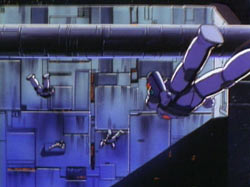 The film was an early subtitled release from CPM, and it never really burned up the charts for them. (Shoujo anime has never sold well, but in the comic culture-dominated early days of US anime fandom it was an even tougher sell.) As such, an English dub wasn't produced until 1996. The English version is one of a small handful of dubs produced by Animaze for Central Park Media, and it's a decidedly middle-of-the-road production. Quint Lancaster (Ghost in the Shell, Ninja Scroll) seems to have directed everyone into the same cadence of slight over-the-top cartooniness, which I suppose compliments the character designs but isn't quite as effective as it could be. Wendee Lee adopts a grating fake Southern drawl to voice Frol, which doesn't work so well. Still, the dub is quite watchable, even decent, despite not being particularly noteworthy.
The film was an early subtitled release from CPM, and it never really burned up the charts for them. (Shoujo anime has never sold well, but in the comic culture-dominated early days of US anime fandom it was an even tougher sell.) As such, an English dub wasn't produced until 1996. The English version is one of a small handful of dubs produced by Animaze for Central Park Media, and it's a decidedly middle-of-the-road production. Quint Lancaster (Ghost in the Shell, Ninja Scroll) seems to have directed everyone into the same cadence of slight over-the-top cartooniness, which I suppose compliments the character designs but isn't quite as effective as it could be. Wendee Lee adopts a grating fake Southern drawl to voice Frol, which doesn't work so well. Still, the dub is quite watchable, even decent, despite not being particularly noteworthy.
They Were 11 is compelling, quaint space adventure, the kind they don't make anymore, and never really made much of to begin with. The deadpan silliness of a classic space opera mixes well with the grand emotions of shoujo, and the end result is something that, in its own subtle way, would win over even the most jaded otaku. It won't be making anybody's all-time top-10 anytime soon, but not everything has to blow one's proverbial socks off. It's engrossing on its own terms.
| Obscure-O-Meter™ | |
| A | Abundant. Available anywhere that carries anime. |
| C | Common. In print, and always available online. |
| R1 | US release out of print, still in stock most places. |
| R2 | US release out of print, not easy to find. |
| R3 | Import only, but it has English on it. |
| R4 | Import only. Fansubs commonly available. |
| R5 | Import only, and out of print. Fansubs might be out there. |
| R6 | Import long out of print. No fansubs are known to exist. |
| R7 | Very rare. Limited import release or aired on TV with no video release. No fansubs known to exist. |
| R8 | Never been on the market. Almost impossible to obtain. |
| Adapted from Soviet-Awards.com. | |
Where to get it:
They Were 11 is out of print in both US and Japanese editions, and has been for several years. The US version is well-produced if unremarkable, and as CPM only had analog 1" masters to work from, the import version probably looks a bit better. Like many theatrical anime of the era, it was shot in 4x3 aspect ratio, and both discs reflect that. Despite being out of print, the US DVD was surprisingly easy to find online, though you'd probably have a difficult time finding it in a store.
Screenshots ©1986 Kitty Enterprises, Inc./Victor Company of Japan, Ltd.
discuss this in the forum (33 posts) |